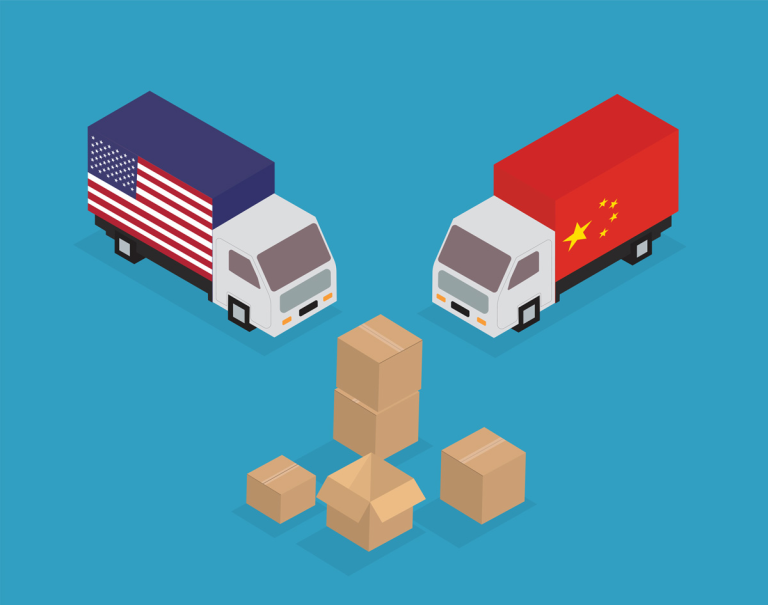Over the course of 2018, the trade relationship between China and the United States has been in news headlines countlessly – and there is no sign of the news cycle changing focus. Throughout, the U.S. government has been very expressive concerning its rationale behind the actions it has taken, as well as the considerations it would be taking when formulating its future actions. At the same time, the voices from the Chinese authorities appear to be comparatively subtle and it is important to read “between the lines” in order to fully appreciate the reactions taken. This article aims to share the observations made from various economic research data, the views shared by key Chinese officials, and the analysis of leading financial institutions.
China has accelerated its pace of reform
Some Chinese government officials believe that the changes in Sino-U.S. relations would help to push China’s own desired reforms. A key area of reform is market access. Increasing market access is an integral part of the suites of requests raised by the U.S. government and in response, the Chinese government announced in June the “2018 National Negative List,” which comprehensively relaxes market access restrictions across a range of primary, secondary and tertiary industries, detailing opening-up measures in 22 sectors including finance, infrastructure, transportation, trade and commerce, culture, agriculture, energy and other related areas.
The Chinese government is working harder to improve the business environment for both Chinese and foreign enterprises. For instances, in the recently published report, the World Tax Report (世界納稅報告), China made significant improvements in its tax administration – the average annual time spent on tax ling has decreased 31.4 percent to 142 hours (versus a global average is 237 hours) while the average number of tax filings has been reduced to seven times a year (global average is 23.8 times). Also, a recent public notice by the Chinese State Administration of Taxation (SAT) set out 26 measures which aim to help businesses from a taxation perspective.
It has also been suggested that the current Sino-U.S. trade dispute would only accelerate China’s shift away from an export economy, dependent on global trade demand, towards a more self-reliant consumer economy of which Internet-related activities contribute a higher share of gross domestic product (GDP) than the developed economies of the U.S., Japan and Europe. China is already making progress in this regard, considering the record-breaking sales made over the Singles’ Day/Double 11 e-retail festival – with total online sales over the 24 hour period on 11 November of US$45 billion, representing a 23.8 percent increase over the prior year, a record itself. As part of the reform strategy, the Chinese government would continue backing the growth of e-commerce and/or the mobile economy, creating a buffer to the negative impacts stemming from the unpredictable global trade environment.
Companies are moderating their investment and operational strategy
The Sino-U.S. trade dispute is disrupting supply chains. Multinational companies (MNCs) relying on complex global supply chains could find that some of their suppliers suddenly disappear, creating pressure for replacing component suppliers and prolonged interruption to manufacturing processes. For example, some Chinese manufacturers who imported U.S.-origin goods into China (e.g., for domestic manufacturing and subsequent domestic sales) are planning to either switch to suppliers who can sell them goods which do not originate from the U.S. or adopt tax planning arrangements to mitigate the additional costs stemming from the tariff increases. In order to make a successful switch, the Chinese companies would need to build new – or reinforce existing – relationships with overseas trading partners or consider insourcing the production of intermediate goods.
Chinese manufacturers who export China-origin goods to the U.S. (including those included on the U.S. increased tariff product lists) would need to better understand their true supply chain footprint. This process could in turn help them to formulate solutions, which could involve corporate carve-out or investment in capital equipment (e.g. when considering moving some manufacturing processes out of China), price changes as well as liaising with the U.S. Importer of Record of their goods to adopt U.S. tariff planning arrangements (e.g., first sales). Another important focus for businesses right now is a thorough review of their working capital facilities and inventory levels. This will help businesses assess the extent to which the organization can sustain a hit on turnover or adapt quickly to a period of extended supply chain disruption.
Another important observation is that an increasing number of MNCs chief executives who are rethinking whether they should consider corporate carveouts, reengineering their supply chains, relocating their distribution centers and reworking their capital investment plans. Statistics from the U.S. Toy Industry Association show 85 percent of the toys selling in the U.S. are made in China, and it has been reported that, Hasbro, one of the top toy makers, will move the bulk of its China production out to mitigate
the increasing tariffs. The toymaker, which sources 70 percent of its products from China, will move to other parts of the world, Chief Executive Officer Brian Goldner said during a conference call in July. However, it was reported that the relocation would be made to other low- cost countries instead of the U.S., and that shifting of production could take a couple of years because these low-cost countries do not appear to have the fundamental infrastructure (e.g. power and electricity) and supply chains necessary to support operations with complex supply chains.
China has introduced/is considering introducing more measures to mitigate the negative impacts to the domestic market
Both the International Monetary Fund and the People’s Bank of China have forecasted that the Sino-U.S. trade dispute would negatively impact the global economy. To mitigate these impacts, the Chinese government has introduced a suite of measures to ease the pressure for businesses. Tax reduction has been identified as one of the most effective macroeconomic tools to aid companies. The government has developed the following plans:
- Export Value Added Tax (VAT) refund – On 22 October, the Chinese Ministry of Finance and SAT jointly released Caishui [2018] No. 123 (Circular 123) to adjust export tax refund rates for certain commodities. This is the second time that the relevant government authorities have adjusted the export VAT refund rates in 2018. Most of the commodities subject to the rate changes have been included in the Sino-U.S. tariff lists:
.
As well as the commodities mentioned above, the export VAT refund rates for other export commodities have been increased from 15 percent, 9 percent and 5 percent to 16 percent, 10 percent, and 6 percent, respectively.
- 26 tax measures to stimulate private businesses – On 16 November, SAT issued a notice, Implementing Several Measures to Further Support and Serve the Development of the Private Sector. The notice set out a suite of 26 measures to support the development of private businesses – divided into five categories:
- Tax reduction
- Enhancement of business operation environment
- Providing targeted assistance
- Tightening of tax collection administration
- Strengthening of tax bureau organization
It has been reported that tax reduction would be considered as the most important task for implementation and it is expected that further announcements relating to tax reductions (i.e. further VAT rate reductions) would be made before the end of 2018.
What do businesses operating in China need to be thinking about?
For many businesses, keeping up with the implications of the trade dispute is proving dif cult – particularly given the view that the complexity made to the global supply can no longer be easily unwound through a few rounds of reconciliatory negotiations.
The immediate impact of tariffs will be higher prices for some products in the U.S. and China, meaning both countries are likely to see a fall in consumer demand and inflationary pressures. Businesses need to understand the global equilibrium has been disrupted, prepare for a range of possible outcomes in the long term, and look for new opportunities. From short- term impacts on supply chain costs and consumer demands, to the longer-term implications on competitiveness and viability – businesses need to be equipped with the right mindset and be receptive to change.
This article is contributed by Kenneth Leung, Greater China Indirect Tax Leader of EY














